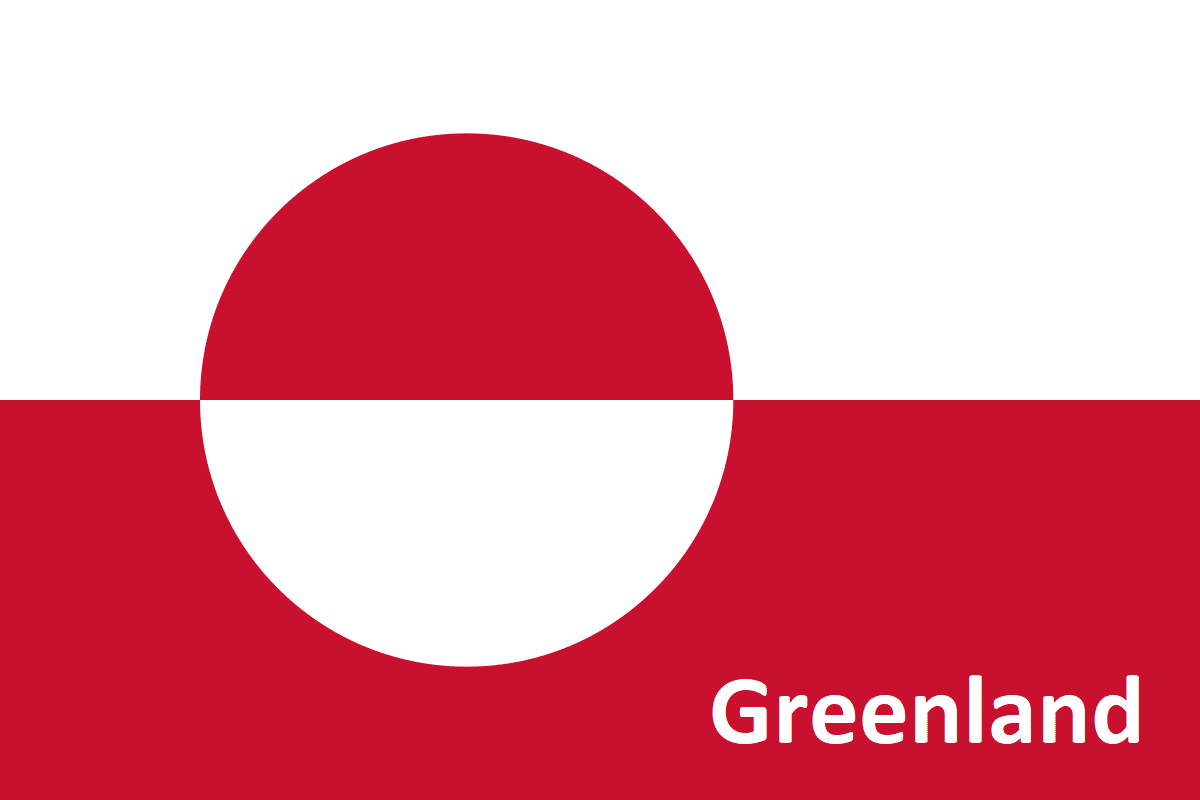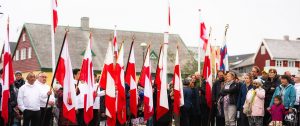Headlines
Greenland Population, Official Language And More.

During World War II, when Nazi Germany invaded Denmark, Greenlanders became socially and economically less connected to Denmark and more connected to the United States. After the war, Denmark resumed control of Greenland and in 1953, converted its status from colony to overseas amt (county). Although Greenland is still a part of the Kingdom of Denmark, it has enjoyed home rule since 1979. In 1985, the island decided to leave the European Economic Community (EEC), which it had joined as a part of Denmark in 1973.

Greenland
The Population
Greenland has a population of just shy of 57,000. 88% of Greenlanders are Greenlandic Inuit, which includes mixed persons. The rest are of white European descent, mostly Greenland Danes.
The Landmarks
Greenland is famous for being the world’s largest island and home to some of the most stunning natural wonders on the planet. Here are some popular travel destinations:
- Ilulissat Icefjord: A UNESCO World Heritage site that offers a breathtaking view of icebergs and glaciers.
- Qaqortoq region: Known for its beautiful fjords and colorful houses.
- Narsarsuaq: Home to the Inuit Cultural Centre.
The Official Language
The official language of Greenland is Greenlandic. The number of speakers of Greenlandic is estimated at 50,000 (85-90% of the total population), divided into three main dialects: Kalaallisut (West-Greenlandic), Tunumiit (East-Greenlandic), and Inuktun (North-Greenlandic). Danish is also spoken by most people, and English is widely understood.
The Culture
Greenland’s culture has much in common with Greenlandic Inuit tradition, as the majority of people are descended from Inuit. Many people still go ice fishing, and there are annual dog-sled races in which everyone with a team participates. Hunting has always been an important aspect of the Greenland Inuit culture, with traditional foods like seal, walrus, narwhal, and caribou consumed frequently.
The Economic Stability
Greenland’s economy depends on exports of shrimp and fish and on a substantial subsidy from the Danish Government. Fish accounts for over 90% of its exports, subjecting the economy to price fluctuations. GDP per capita is close to the average for European economies, but the economy is critically dependent upon substantial support from the Danish government. Unemployment remains high, with the rest of the economy dependent upon demand for exports of shrimp and fish.
The GDP
Greenland’s GDP was worth 3.24 billion US dollars in 2021. It represents less than 0.01 percent of the world economy.
The Currency
The currency used in Greenland is the Danish Krone (DKK), which is also the official currency of Denmark and the Faroe Islands. As of October 2021, 1 USD is equal to 7.05 DKK.
The Food
Greenlandic cuisine is traditionally based on meat from marine mammals, birds, and fish, and normally contains high levels of protein. Since colonization and the arrival of international trade, the cuisine has been increasingly influenced by Danish, British, American and Canadian cuisine. Some traditional Greenlandic dishes include:
- Suaasat: A traditional Greenlandic soup made from seal, whale, reindeer or seabirds. It often includes onions and potatoes and is simply seasoned with salt and pepper or bay leaf.
- Mattak: A traditional Inuit specialty made from raw hide of narwhal or white whale. It can be prepared with blubber and occasionally dried reindeer meat.
- Dried capelin: A popular seafood dish that can easily be dried.
- Arfivik: Smoked whale meat served with onions and potato.
Major Cities
Here are some major cities in Greenland:
- Nuuk: The capital city of Greenland with a population of around 16,464 people.
- Sisimiut: The second-largest city in Greenland with a population of around 5,598 people.
- Ilulissat: A city situated in the western region of Greenland in the Qaasuitsup municipality with a population of around 4,737 people.
- Qaqortoq: A city with the most population in Greenland’s southern region at 3,229 people.
Major Airport, Sea Port and Schools
Here are some major airports and sea ports in Greenland:
- Nuuk Port and Harbour: The largest cargo port in Greenland located on the western coast of the country in the southeastern area of the capital city known as Old Nuuk.
- Kangerlussuaq Airport: The largest airport in Greenland located on the west coast of Greenland near the head of Sondre Stromfjord with a runway length of 10,000 feet.
- Paamiut Port: Located on the southwestern coast of Greenland facing the Labrador Sea, an arm of the North Atlantic Ocean.
As for schools, there are several schools in Greenland that offer education to students from primary to secondary levels. Some notable schools include:
- Nuuk International School: An international school located in Nuuk that offers education to students from kindergarten to grade 10.
- Qaqortoq International School: An international school located in Qaqortoq that offers education to students from kindergarten to grade 10.
- Ilulissat International School: An international school located in Ilulissat that offers education to students from kindergarten to grade 10.





